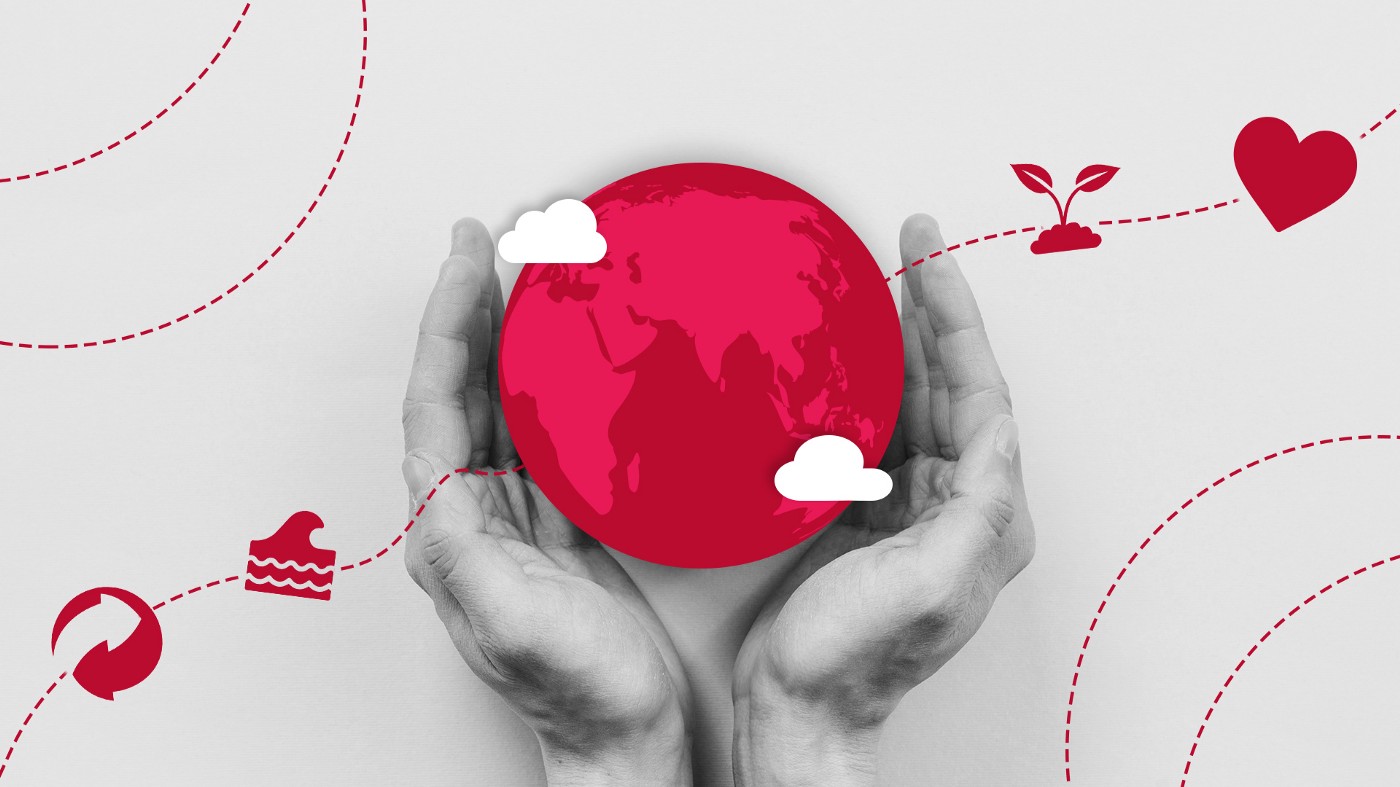
Restoring our Earth — one conscious choice at a time
“It’s only one straw,” said eight billion people…
The Earth Day 2021 theme, ‘Restore our Earth’, struck a chord deep within me. Taking care of the environment has been as natural as breathing to me my whole life. It seemed like (and still is) the obvious thing to do. We keep our own houses clean, don’t we? This beautiful Earth is the home of mankind, so we all have a responsibility to look after it.
But as I grew older and saw more of the world, I began to realise that environmentalism was, in fact, not the norm in other societies. Visceral images such as massive piles of plastic heaped up outside peoples’ homes left an immediate — and horrifying — impression, but something like that didn’t happen overnight. They were and are reflections of the everyday choices we make. To this day, our beloved Earth continues to pay the price.
Choice and consequence
Every action has a consequence. When was the last time we stopped to think about what the effects of our choices would be for Mother Nature? We order lunch that comes in a polystyrene takeaway box because throwing the whole thing away after we’re done is more convenient than using our own Tupperwares and washing them after. But where does that box go? What happens to it?
I’ve seen what happens for myself. The polystyrene will crumble apart into thousands of tiny balls that enter the environment. But they never decompose. Ever. I’ve gone on beach cleanups and picked up thousands of little plastic balls. They were everywhere.
If the scale of the environmental impact that humans have on the world is difficult to comprehend, take four minutes out of your day to watch this incredible award-winning video. It really puts things into perspective and I promise it’s worth it.
To summarise (if you haven’t watched it), if Earth is as old as 24 hours, mankind has only been alive for 3 seconds. Yet we are single-handedly destroying her. We strip her of her natural treasures and pollute her life-giving resources, and wonder why entire species are disappearing and the very climate is changing. Why are we surprised? We know the problem — it’s us. Mother Nature is screaming, and we are not listening. How will we make it to the 4th second?
“But the beautiful thing is, we can choose to open our eyes and ears. We can be the change. We are the solution.”
Restoration through education
Education is a very important first step in building awareness. We need environmentalism to be taught across the board, in schools and in workplaces, and we need people to take it seriously. We share this earth with billions of others. If we each used one plastic bag today, imagine the amount of waste that would create. People need to understand the impact of their choices. “It’s only one straw,” said 8 billion people…
Understanding the why is crucial because that’s how people become genuine advocates for change — when it becomes a cause they personally believe in instead of being a trend they follow or a display of feel-good altruism. Then it becomes part of their conscious decision-making, which has a ripple effect on the communities they’re in and the businesses they support. The how will be swift to follow.
Conscious consumerism
I find that people often shy away from environmental-friendly practices because they see it as inconvenient or expensive. But if you really think about it, it’s more about a mindset shift and adjusting to new habits. It’s not inconvenient to remember to bring your own shopping bags and water bottle. Using and washing your own tiffin carrier takes just a minute out of even the busiest day. Choosing to buy fewer clothes doesn’t impact your lifestyle and even saves you money.
These are all small, incremental acts that just require tiny adjustments to how we live. They might not seem like much. But the scale of our impact isn’t measured by just one person, but by all of us. If we multiply one person’s positive actions by hundreds and thousands of others making the same choices, it becomes significant.
Sincere sustainability
Many brands have sustainability-focused messaging and have even launched products and services that are ‘eco-friendly’ and ‘sustainable’. But using organic cotton doesn’t make a fast fashion line ‘sustainable’, especially if it’s still produced in the same factories as the regular lines. Around 92 million tonnes of textiles are wasted each year, which is equivalent to a rubbish truck’s worth of clothes ending up in landfills every second.
Brands can make a real difference by thinking about sustainability along the entire supply chain — from sourcing to production, from packaging to delivery. Are materials sustainably sourced? Can we use reusable packaging materials? It might cost more on paper, but making an authentic positive impact will also attract authentic customers — and it’s an investment into the future of our world. There’s no better ROI than a safe and healthy world for our children to live in.
Introducing Greenhill
I’m a firm believer of walking the talk. I’m proud to be leading Greenhill, our sustainability initiative at Redhill. The entire concept is to give people the responsibility of making a positive difference through enabling them to take greener actions. We’re putting together a whole package of the steps we can take to reduce our collective footprint on the world. Red is our colour, but our hearts beat green.
We’re already recycling anything that can be — paper, plastic, glass etc — and we’ll shortly be in receipt of recycling bins in the office. We’ve implemented a ‘bag library’ in the Singapore office, which people can use when they go out to buy their lunches, and are buying common crockery and cutlery so that people can say no to plastic forks and spoons. We subsist on coffee (agency life) and the number of cups we throw away is shocking, so we’re also producing a reusable Redhill coffee cup made by a sustainable supplier.
We work with wonderful organisations like Seven Clean Seas to ensure we’re on the right track and to expand the authentic impact that Greenhill can have. We’re also looking to make beach cleanups a new team building activity to do our part for the environment and strengthen our bonds. And to encourage that sustainability momentum, we’re considering incentivising sustainable actions through a bottle cap ‘change board’.
“We are just a chapter in the world’s story. For there to be a next chapter for our future generations, we have to leave as little impact as possible on the world.”
When the world was put on pause in the throes of the pandemic, we saw an incredible change. In Singapore, we had monitor lizards crossing the street. Hornbills returned to nest in my building, where they haven’t been seen for years. In neighbouring Malaysia, a near-dead river came back to life. There are hundreds of these examples around the world. Without the noise and pollution of humanity, nature was able to find her voice.
This experience shows what an impact we have on the world, and what a difference it makes when we switch off. I believe that a harmonious co-existence is possible, but we need to make respectful choices and hold up our end of the bargain. It’s nothing short of a miracle that we have this beautiful Earth to shelter and flourish on. But what are we doing for her?
I’m fully aware that change takes time and that it does need to be a partnership between grassroots activists, governments, businesses and individuals. But we’re already on the right track. It has been done and we can do it again. We don’t need to wait for Earth Day to take action — every day is Earth Day. And maybe, just maybe, we’ll make it to that 4th second.
